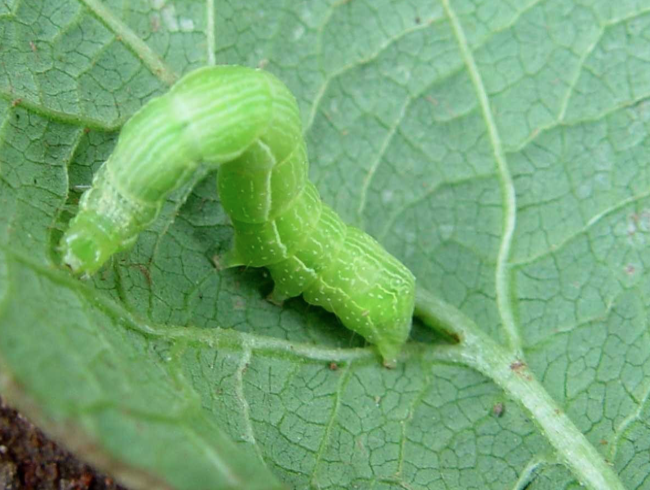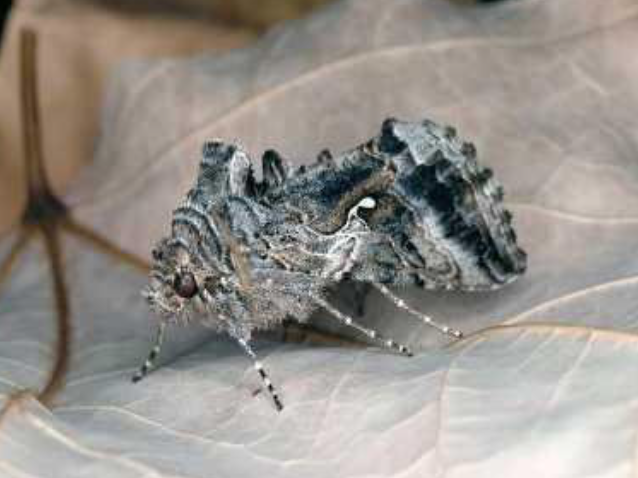Cabbage looper (Trichoplusia ni)
Credit: Biovision-Infonet

(c) A.M. Varela, icipe

(c) Joseph Berger. Courtesy of Ecoport
In addition to the cotton leaf worm (see fruit borers), other caterpillars such as the cabbage looper (Trichoplusia ni) feed on tomato leaves. However, generally they are not of economic importance.
The cabbage looper is a green caterpillar with faint white stripes along the body. Caterpillars are about 3.5 to 4 cm long when fully-grown. As they move, they arch their back in a looping fashion, hence the common name looper. Larvae (caterpillars) chew holes in the leaves, and larger caterpillars consume great amounts of plant material.
The adult is a moth, about 2.5 cm in length and mottled, greyish-brown.
| What to do: Conserve natural enemies. These caterpillars are attacked by a large numbers of natural enemies, including parasitic wasps and flies. Birds and bats feed on the adults (moths). Pick caterpillars by hand and destroy them. When control is necessary use biopesticides such as neem-based products or Bt. Neem products control cabbage looper by interfering with the growth of the young caterpillar. Bt and neem should be applied when caterpillars (larvae) are still in the early growth stages. |